#Jorō spiders
Explore tagged Tumblr posts
Text

By Christina Butler from Georgia, United States - [Joro Spider - Trichonephila clavatamlqooppsulhq Lidl HK go ñ km.], CC BY 2.0
#joro-spider#joro spider#jorō-gumo#spider#arachnid#i saw a spider similar to this last summer i think but i don't believe we have them this far north. so probably some kinda orb weaver
49 notes
·
View notes
Note

It is a Jorō spider! Her web has guard threads around it so I don’t get stuck if I walk into it accidentally. Don’t you think that’s very polite?
10.0000/10
I think that is exceedingly polite
103 notes
·
View notes
Text



WOWWWW! It’s the Jorō-spider from Japan! They’ve been in the US for ten years but it’s my first time seeing one.
Her abdomen alone is an inch long. Her web is a giant 3D structure with slightly yellow threads, anchored to three trees. Wikipedia says she is mildly venomous :D
9 notes
·
View notes
Text
WASP REVIEW - QUEEN SECTONIA (& ANTLERS) (KIRBY: TRIPLE DELUXE)

[Image ID: A 3D render of Queen Sectonia from Kirby: Triple Deluxe /End IDs.]
I love the Kirby series! It's a great series for a more casual platforming experience, and almost game I've played has been super memorable. Now, in all honesty, don't remember much of my time playing Kirby: Triple Deluxe, but I feel like it has more to do with how sparse my play sessions were at the time, and how long ago it was, rather than the actual quality of the game. One of the things I do remember, though, is the big stinger of a final boss that is Queen Sectonia!
This review is gonna be a quick one because, for one, she doesn't appear for that long in the game, and secondly because there really isn't all that much to pull from in terms of real world equivalents. In terms of appearance, her body is thin-waisted, akin to a member of the family Sphecidae, her exoskeleton seeming fairly smooth (although most of is covered by her regal clothing. Her eyes are seemingly somewhat mammalian in nature, with sclerae, irises, and darker spots that at least resemble pupils. She doesn't actually have any limbs at all, with her gloved hands floating Rayman-style off to her sides. Honestly, her thick antennae and partially clear, very distinctly venated wings, remind me of a Hornet Moth, more than anything, with some further wing comparisons to be drawn from the venation of Cicada wings.



[Image Sources: iNaturalist, Bill Keim, Wikimedia Commons, Colette Kerr, and Biomimicry Institute, Sarah Batsford | Image IDs: A photo of a black and yellow, Yellow-Legged Mud Dauber, followed by a photo of a black, yellow, and brown Hornet Moth, further followed by a photo of a Cicada's forewing /End IDs.]
Furthermore, and I have to give props to the editors of WiKirby for this observation, it seems as though some of her features, as well as her backstory, may also be in reference to the Japanese legend of the Jorōgumo, and by extension the real world Jorō Spider, the Jorōgumo being a Yōkai which takes the form of a Jorō Spider but possesses the ability to transform herself into another form, that of a beautiful, human woman.

[Image Source: Flickr, Christina Butler | Image ID: A photo of a black, yellow, grey, and red Jorō Spider /End ID.]
Speaking of her backstory, interestingly enough, this is where she gets a bit odd, as she was actually originally more spider-like. In her original form, she was obsessed with beauty, so her at the time friend (later lackey, and even later enemy), Taranza, bestowed her with the Dimension Mirror, which gave her the form we see in the game now. Perhaps she simply saw some insectoid forms as being more elegant and/or beautiful than her original form, spurred on by thoughts of the regal queens of wasps (Vespids, Bees, Ants), or mayhaps this is just a design choice entirely intended just to tie in to the plant theming of the game, with wasps being essential pollinators. It seems as though she was then corrupted by the Mirror, attempting to take over Floralia and Planet Popstar.


[Image IDs: Two 3D renders of what is implied to be Queen Sectonia's original form /End IDs.]
As for her behaviors, it's hard to see much that really ties her current form in with real world wasps apart from the aspect of queenship, she doesn't even truly seem to use her stinger, instead opting for swords (A common choice amongst Hymenopteran enemy designs it seems) and magic. One could say that the implications that her kind feed on the life force of others to survive is referential to parasitic wasps, including the aspect of control (See last week's review of 'Parasitica' from TMNT 2012 for more on real world parasitic wasps that control other insects), but it could just as easily be said that this could once again be in reference to the man-eating Jorōgumo.
It certainly doesn't get any more easy to analyze in terms of the real world when we get into the second part of the fight, as she fuses herself with the Dreamstalk to become Flowered Sectonia, feeding indiscriminately on all life below (not even close to the most fucked up thing in this mostly E For Everyone franchise, between Shiver Star, Fecto Forgo, Zero, and the extremely Dark Souls sounding boss Astral Birth Void). Her face becoming the pistil of the flower and her antennae the stamens, multiplying into three pairs, her wings taking on a different and more angel-like shape. In this form, her attacks still use magic but are also heavily plant-based.

[Image ID: A screenshot of Flowered Sectonia /End IDs.]
One more thing of note are her other lackeys, the Antlers, fairly standard platformer enemies that use maces and shields to attack Kirby, taking orders from and often summoned by Sectonia in battle. They have an anthropomorphic build, similarly Rayman-esque, with the floating hands and feet that may or may not be connected to the body, and have a head that reminds me of that of a Paper Wasp, Sphecid, or Cuckoo Wasp, although they are wingless, like some ant castes or female Mutillids. They also come in four unique flavors! Original, Ice, Fire, and Spark.



[Image Sources: New Scientist, and Australian Museum, Mark Raward | Image IDs: A screenshot of the Antlers during the fight against Queen Sectonia DX, followed by a photo of a black, yellow, and brown Paper Wasp's face, followed then by a photo of an iridescent green, blue, and black Cuckoo Wasp /End IDs.]
Not much to say about these guys (Gals?), other than that it shows that Seconia does in fact have some sort of hive, in all honesty, but I do find them supremely charming.
With all that said, what would I rate Queen Sectonia and her followers? Well I usually like to rate these wasps on accuracy, and if I did that for these characters, the rating would probably be fairly low. However, it seems like she's really a bit too far from the real thing to really do that, especially with her more apparent ties to folklore, so, I'll have to go for just a straight up opinion here. Really, this is a type of character I've seen a few times before, the overlord obsessed with beauty and power, which isn't necessarily a bad thing but I don't find it very interesting. I do find myself really enjoying her backstory and inspiration, and her design is pretty alright!
-
Overall: 6.5/10
-
Leave your wasp review suggestion in the replies, tags, or askbox!
11 notes
·
View notes
Photo

The Jorō spider (pictured, an individual in Kanagawa, Japan) has spread across Georgia and into the neighboring Carolinas, as well as parts of Tennessee and Oklahoma.
PHOTOGRAPH BY TONY WU, NATURE PICTURE LIBRARY
44 notes
·
View notes
Text
just realized spidertons helm is probably based off the jorō spider, a popular spider in japan... i KNEW he was apart of nephila
4 notes
·
View notes
Text
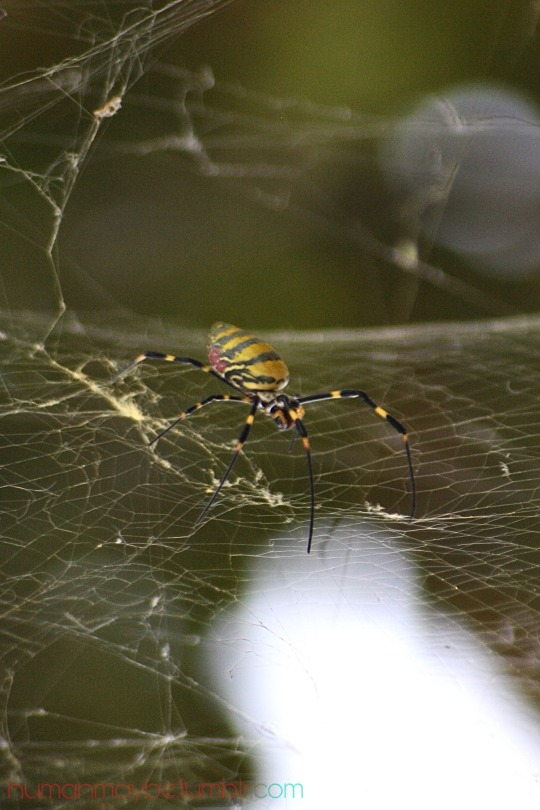
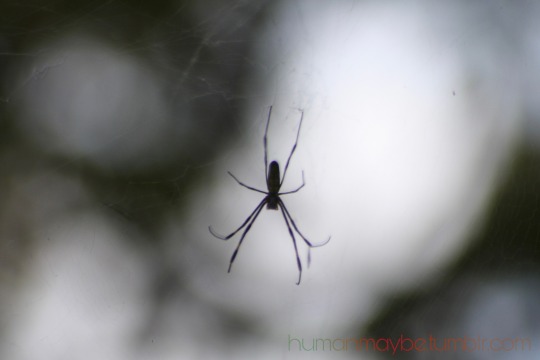
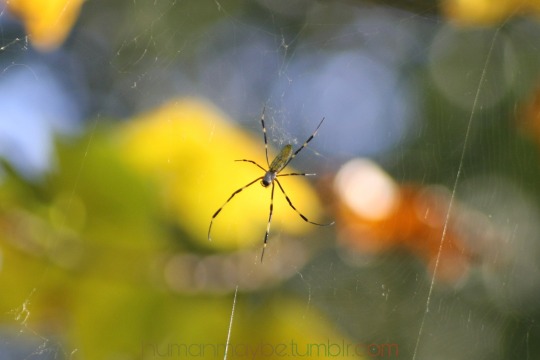
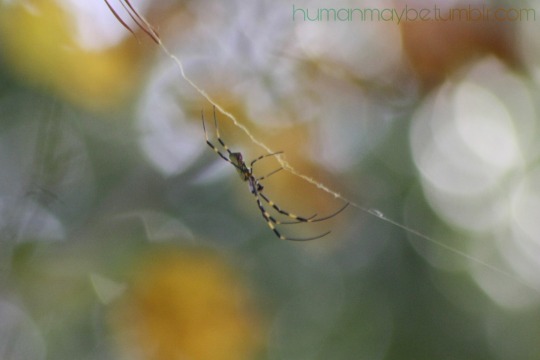
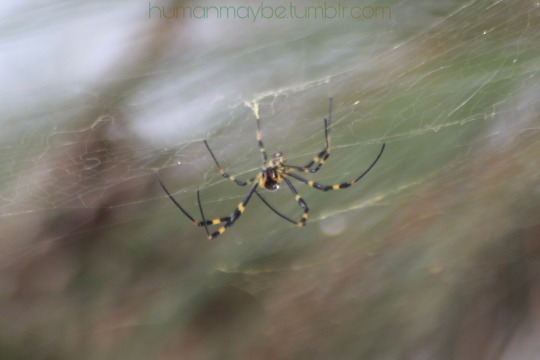
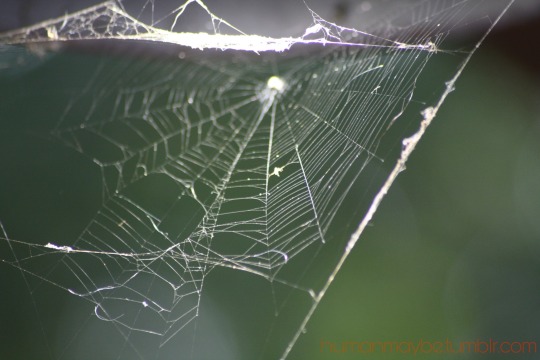
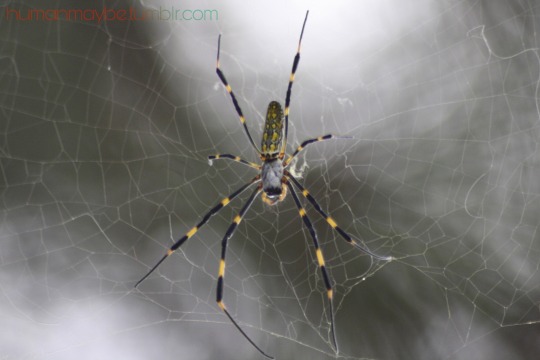
Female Jorō spiders and their webs
Found in my yard, photographed by me
#spiders#joro spider#jorogumo#arachnids#spider web#autumn#autumn aesthetic#halloween#my photography#they’ve taken over my area and my brain#I adore them ok? they’re so lovely#and so gentle#obvi like. don’t go picking them up and such if you don’t want to get bitten#but despite their size these spiders have small fangs that can rarely actually pierce human skin#and when they do their venom is light#it would feel like a bee sting#even in scientific study where scientists are purposefully bothering them they just. refuse to even bite#they’re so sweet and intelligent. they’d rather move their whole web if they feel like they’re in an unsafe place or being bothered#and their webs! their webs can be 5-10 feet long!!#and look at that golden silk. it’s so beautiful in the mornings and evenings with the sunlight shining on them#they’re lovely little creatures and I have developed an obsession with them#I get sad when I notice one is gone and has moved somewhere I can’t watch her#I worry about them and hope they’re safe#look how huge that one at the top is! she’s so full of eggs! she’s the biggest in the yard and she has two husbands!#I’m just so in love with Jorō spiders ok
13 notes
·
View notes
Text
Fascinating and terrifying news :)
these very big invasive spiders have been found to withstand both cold temperatures and the hustle and bustle of city life, meaning if they wanted to they could probably move from the southeast to the northeast usa all the way up to canada.
even though I HATE THIS, there is something interesting to note
researchers had to carefully pin down and restrain the spiders, without causing harm or injury [...] to capture the creatures’ heart rates using a microscope camera to manually count the spiders’ heartbeats through the arachnids’ abdomens. They compared the spiders’ resting heart rates to their heart rates during restraint and found all the spiders’ heart rates increased
i guess it's kind of a comfort to know that when a spider and i run into each other we're BOTH internally stressed and freaking out
also these new spiders are apparently "fairly docile and easy to move" so... if i had to........ i guess....... i could pick it up and move it 💀
#tw spiders#i wish i didnt have such a visceral reaction to seeing spiders#but something about all those legs scrambling around#💀
3 notes
·
View notes
Text
Enjoying that in xxxHolic the Jorō-gumo (spider yokai) is a lesbian who is in love with a human woman who ate mermaid meat and as a result became immortal.
(The Jorō-gumo also ate Watanuki's right eye at some point but in a less gross way than the Tsubasa eye eating incident because she mostly just ate like...the spiritual essence of it.)
But I like it when lesbians show up, especially in CLAMP's works who have a lot of tragic shonen-ai style protagonists.
1 note
·
View note
Text
Une espèce cleptoparasite du genre Argyrodes s'accroche aux toiles des autres araignées pour y voler sa nourriture
See on Scoop.it - EntomoNews
Le vol de nourriture sur les toiles d’araignées est un comportement bien décrit chez les oiseaux. Toutefois dans les précédentes observations, les volatiles ont été aperçus en vol stationnaire ou perché sur une branche voisine, ont rapporté M. Davis et M. Schronce dans une étude publiée le 14 novembre dans le journal Insects.
Cette toile d’araignée est assez robuste pour supporter le poids d’un oiseau
Jason Bittel 29 nov. 2022, 18:11 CET
"... L’araignée Jorō, une espèce aux couleurs vives, a été introduite accidentellement aux États-Unis en 2014 par le biais d’un conteneur d’expédition en provenance d’Asie de l’Est, d’où elle est native. Bien que ces arachnides noirs, jaunes et rouges soient grands et que leurs pattes s’étendent sur la longueur d’une main d’adulte, ils sont pour la plupart inoffensifs pour l’Homme.
(À lire : Espèce invasive : l’araignée Jorō à l’assaut des États-Unis.)
En outre, l’araignée Jorō fait partie d’un genre d’aranéomorphes bien connu pour tisser de grandes toiles robustes. Une autre espèce de ce genre, également introduite aux États-Unis, a été surnommée « l’araignée à la soie dorée », en référence à la teinte jaunâtre de sa toile."
(...)
"... Jusqu’alors, ce comportement n’a été documenté qu’une fois. M. Davis se demande si d’autres oiseaux natifs pourraient commencer à tirer profit des potentiels avantages apportés par ces nouvelles grandes araignées [les araignées Jorō Trichonephila clavata, ndé] et leurs toiles.
Une autre espèce cleptoparasite appelée Argyrodes semble déjà profiter de cette situation.
« Ces petites araignées font en quelque sorte leur vie en s’accrochant aux toiles des autres araignées et en volant leur nourriture », explique M. Davis. « Sur toutes les toiles d’araignées Jorō que j’ai vues cet automne, j’ai aperçu ces petites bêtes sur au moins 30 % d’entre elles. Elles profitent largement de la présence des araignées Jorō. »
(...)
Novel Observation: Northern Cardinal (Cardinalis cardinalis) Perches on an Invasive Jorō Spider (Trichonephila clavata) Web and Steals Food - Insects, 13.11.2022 https://www.mdpi.com/2075-4450/13/11/1049
------
NDÉ
via Wikipédia
→ Argyrodes - Version du 8 mai 2024 à 17:45
https://fr.wikipedia.org/wiki/Argyrodes
"Les araignées du genre Argyrodes présentent des stratégies écologiques commensale, en vivant sur le bord de la toile d'une autre araignée ou sur une petite toile irrégulière à proximité ; cleptoparasite, en volant ses proies stockées ou délaissées ; et parfois aranéophagique, en tuant l'araignée pour s'en nourrir5,6. Plusieurs Argyrodes peuvent habiter la même toile dans une coexistence relativement pacifique7. Leurs hôtes appartiennent très souvent au genre Nephila et apparentés5, telle la Néphile à soie dorée8."
0 notes
Text

【庭】ジョロウグモ(6月20日)
Trichonephila clavata, also known as the Joro-spider (Jorō-gumo), is a spider in the Trichonephila genus.
1 note
·
View note
Text
Are 'Giant, Flying' Joro Spiders Really Taking Over The U.S.?
The Black-and-Yellow Arachnids Are Making Headlines Again, But Scientists Say Not To Be Alarmed.
— By Jason Bittel | June 06, 2024

A Female Joro Spider tends her web in Oconee County, Georgia, in 2021. Photograph By David Coyle, Clemson University
Joro spiders are in the news again, and judging by the headlines, everyone is doomed.
“Giant venomous flying spiders… heading to New York area,” says CBS News. “East Coast braces for invasion of palm-sized venomous spiders capable of flying,” echoes Fox Weather. And The Guardian calls the arachnids “gag-inducing."
Of course, the scientists who study these animals, which are native to Asia, say such descriptions are misleading at best.
Floyd Shockley, an entomologist and collections manager at the Smithsonian National Museum of Natural History in Washington, D.C., says he’s “mortified” by some of the sensationalist headlines. “There’s no evidence that they’ve made it to New York.”
While it’s true that joro spiders arrived in Georgia in 2014 by unknown means and can survive in the United States, their colonization of the continent isn't exactly imminent. So far, the spiders have been seen in Georgia, the Carolinas, Tennessee, and Oklahoma, with a few tiny satellite populations in places such as Maryland.
For instance, a recent Gothamist article describes the spiders as having “a body about four inches long and legs that span six to eight inches—about the size of a human hand.”
“That is completely ridiculous,” says Shockley. “You’d have to stretch this thing out like a medieval torture device to get [its legs] even four inches, let alone six inches.”
What’s more, at this time of the year, every joro spider in the U.S. is no larger than a grain of rice. Adults die each winter, with eggs hatching in the spring and starting the cycle anew.
With so much misinformation afoot, let’s take a look at some of the other claims circulating online.

Joro Spiders are known to weave exceptional large webs. In this case, a Joro Spider web was strong enough to support a perching cardinal. Photograph By Arty Schronce
Can Joro Spiders Fly?
“The way those headlines are written, it makes it sound like they’re the monkeys in the Wizard of Oz,” says David Coyle an assistant professor and invasive species expert at Clemson University.
In truth, none of the large adult joro often pictured in news stories are capable of flight. However, as spiderlings, joro and many other spiders can take to the skies in a common dispersal process called ballooning.
“Right after they hatch, the little hatchlings may be the size of a sesame seed,” says Coyle. “Some of them will get up high and they’ll raise their abdomen. They’ll put a few strands of silk out, and some of them will get carried away by the wind.”
“I hate to tell people, but every spring, there’s probably thousands of little spiders ballooning over your head, and people have no idea it’s happening.”
As for their "flying" to new states, Shockley says "they have expanded their range, but it's not surprising for an introduced species in 10 years to have moved, you know, a state."
He adds "we still don't really know anything about how they would [survive] northeastern winters, because obviously they're not there yet."

This Spider Web is Strong Enough For A Bird To Sit On, A Scientific First! The newly recorded behavior could mean the Jorō Spider, An Invasive Species, can provide a small but positive benefit to other wildlife. A massive Joro spider web glistens in backlight sunshine in a Georgia backyard. Photograph By Bluiz60, Alamy Stock Photo
Are Joro Spiders Venomous?
This is actually a bit of a trick question, since "spiders are predators and use venom to capture their prey,” says Shockley.
This means that nearly every spider on Earth is venomous, save for two small spider families that have lost the ability to produce venom.
The real question is whether an animal is venomous in a way that could harm people. For U.S. spiders, that is an incredibly small category that includes black widows and brown recluses—not joros, whose venom is non-toxic to people, he says.
In fact, the few reports of joros biting people suggest it’s like something between the itchy irritation of a mosquito bite and the pain of a bee sting.

These Non-Native Arachnids (pictured, a female) prefer to build their yellow-tinted webs high off the ground. Photograph By Malcom Fairman, Alamy
Are Joro Spiders Aggressive?
Despite being relatively large and brightly colored, the joro spider is kind of a pushover.
“Based on my research, they’re really shy,” says Andy Davis, a research scientist at the University of Georgia. “If you leave them alone, they’ll leave you alone, and you can both go about your business.”
In a 2023 study published in the journal Arthropoda, Davis found that when threatened with a puff of air, native spiders froze for about 96 seconds before resuming their spiderly duties.
Joro spiders, on the other hand, didn’t move again for more than an hour, making them the most timid arachnids on record. (Read more: “Turns out that huge spider invading the U.S. is incredibly ... shy?”)
“I have held joro spiders dozens of times,” adds Coyle, who has never been bitten. “My kids have held them. They’re typically very docile.”
"They’re just big and scary-looking to a lot of people, but that doesn’t necessarily mean they’re mean or have malevolent or malicious intent.”
The Truth About Joro Spiders
However unwelcome joro spiders are in the U.S., some experts say it’s time to get used to their new neighbors.
“This is a tough sell,” says Davis, “but maybe, instead of trying to do away with them, people should just maybe sort of learn to live with them. Because their spread is exponential at this point. Like, there’s millions upon millions of them.”
As far as their impact to the environment, it's likely a mixed bag. Joros eat other invasive species, including brown marmorated stink bugs and spotted lanternflies. However, there's also evidence they're outcompeting native spider species.
Even so, Coyle doesn’t see much reason to kill them on sight.
“If it sparks joy, smash them,” he says. “Are you going to do any measurable impact whatsoever to the population? No, you’re not.”
youtube
#Youtube#Giant | Flying | Joro Spiders 🕷️🕷️🕷️#The Black-and-Yellow Arachnids 🕷️🕷️🕷️#Scientists#Spiders 🕷️🕷️🕷️ | Invasive Species#Human-Wildlife Conflict#Social Media | Wildlife#Animals#The National Geographic
0 notes
Text
Biologists froze 27 Jorō spiders and found that all the creatures lived
The spider thrives in regions of Korea and Japan 'with similar climates to Michigan,' a scientist tells DailyMail.com and will spread across the US
READ MORE: Giant 8in spiders from China seen parachuting through the air on the East Coast - and the invasive species will soon hit New York and New Jersey
Some spiders will die when cold weather hits, but scientists warn an invasive species from Asia may survive and continue to invade the US
0 notes
Text


Jorō spider wallpapers
Made from my photos of them x
Formatted for iPhone 14 pro
#iphone 14#phone wallpaper#iphone wallpaper#spider#arachnid#joro spiders#jorogumo#Halloween#cottagecore#autumn#autumn aesthetic#I think they could work with other phones lol#I just made them for personal use and decided to put them here too#free to use#my photography
6 notes
·
View notes